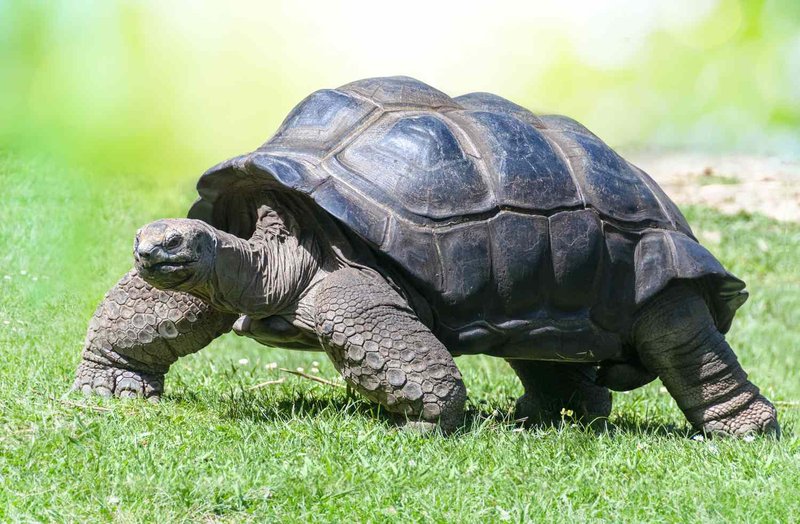
Tortoises come in various shapes and sizes, and they play important roles in their ecosystems. From the giant Galápagos tortoise to the smaller, everyday Mediterranean variety, each species has unique traits and behaviors. When discussing tortoises, it’s essential to recognize that not all tortoises are the same. Some are terrestrial, while others might even be semi-aquatic. So, grab a cup of coffee, and let’s dive into some common myths and facts about these captivating creatures!
Myth 1: Tortoises are Just Slow Animals
One of the most popular myths is that tortoises are merely slow animals. While it’s true they aren’t known for sprinting, they have unique adaptations that help them thrive in their environments. You might be surprised to know that some tortoise species can actually move quite quickly when they need to!
For instance, the *Leopard Tortoise* can reach speeds of about 0.3 miles per hour. Though that may not seem swift compared to a cheetah, that pace is pretty impressive for a creature with a heavy shell. The reason they tend to move slowly is due to their built-in armor, which protects them from predators but also makes them less agile. Think of them as a tank—slow to move, but very hard to crack!
Moreover, their slow movement is more about energy conservation. Tortoises often spend long periods basking in the sun or hiding away. This behavior isn’t laziness; it’s a survival tactic. By conserving energy, they can survive on a limited diet and thrive in environments where food is scarce.
Myth 2: Tortoises Can Live for Decades or Centuries
You may have heard that tortoises can live for hundreds of years, and while it’s true for some species, the reality varies widely. The giant Galápagos tortoise, for example, can live up to 177 years, while other tortoise species might only average around 50 years.
The myth often stems from the famous saying that “slow and steady wins the race,” leading people to associate longevity with their pace of life. But life expectancy in tortoises usually depends on various factors, including their environment, diet, and overall health.
In captivity, tortoises can sometimes live even longer due to better care and fewer predators. However, it’s crucial to remember that not all tortoises will reach such impressive ages. *Red-footed tortoises* often live about 50 years, while smaller species like the *Greek tortoise* usually last around 75 years.
Myth 3: Tortoises Are the Same as Turtles
Let’s clear this up: tortoises and turtles are not the same, though they both belong to the order Testudines. Tortoises are land-dwelling reptiles, while turtles are usually aquatic or semi-aquatic. This distinction is significant, and understanding their differences is essential for appreciating their unique qualities.
Tortoises have a more domed, heavier shell built for land survival, while turtles often have a flatter shell shape that helps them glide in the water. If you think of tortoises as the land-based cousins of turtles, it makes it easier to remember their differences.
Here’s a quick breakdown of their differences:
- Habitat: Tortoises live on land; turtles live in water.
- Shell: Tortoises have a round, heavy shell; turtles have a flatter, lighter shell.
- Diet: Tortoises are usually herbivores; turtles can be carnivorous or omnivorous.
Understanding these differences can enrich your appreciation for both types of reptiles.
Myth 4: Tortoises Are Dangerous Pets
You might think that having a tortoise as a pet could be hazardous due to their tough exterior. However, tortoises generally make safe and low-maintenance pets. They’re not aggressive and are often quite calm, making them suitable for various households, including those with children.
Of course, like any pet, they require proper care and respect. Tortoises need appropriate habitat setups, including spacious enclosures, heat, and UVB lighting to mimic their natural environment. Understanding their needs is paramount to being a responsible tortoise owner.
One thing to be cautious about, though, is handling them. They’re not the type of pet you can pick up and cuddle often. Instead, it’s better to let them explore their space freely. Just like meeting a shy friend, sometimes it’s best to give them time and space to feel comfortable.
Myth 5: Tortoises Don’t Need to Drink Water
Another common myth is that tortoises can get by without drinking water. This couldn’t be further from the truth! Hydration is key for tortoises, as they can dehydrate, especially in hot climates. They need access to fresh water every day.
Additionally, many tortoise species get some of their hydration from the foods they eat, especially leafy greens and fruits. For example, cucumbers and watermelons are not just tasty treats; they also help keep tortoises hydrated. If you’ve ever seen one munching on a succulent leaf, you’d notice how much they enjoy their meals!
Make sure to provide a shallow dish of water in their enclosure, ensuring it’s clean and fresh. This not only helps with hydration, but it also allows them to soak, which is vital for their skin health.
Myth 6: Tortoises Have a Poor Sense of Hearing and Vision
You might be surprised to learn that tortoises have quite decent senses! Contrary to the belief that they rely solely on their shells for protection, tortoises can hear and see fairly well. In fact, they can detect sounds and vibrations, helping them sense danger from predators.
Their vision is also more advanced than many realize. Tortoises can see a range of colors, and they use this ability to better find food. It’s fascinating to think about how well they can navigate their environments, even though they may not be as fast as other animals.
Here’s a fun fact: Tortoises can even see some UV light, which is critical for their health, especially in terms of vitamin D synthesis. This is why providing proper lighting in captivity is essential to keep them healthy and happy!
Tortoises are truly remarkable creatures with rich histories and complex behaviors. By debunking these common myths, we can better appreciate their unique roles in our ecosystems and as pets. They might be slow, but their lives are filled with fascinating traits that deserve our attention.
So the next time you see a tortoise, remember: their stories go much deeper than their shells. Let’s give them the respect and care they deserve, whether in the wild or as beloved companions. After all, there’s so much more to these ancient reptiles than meets the eye!

